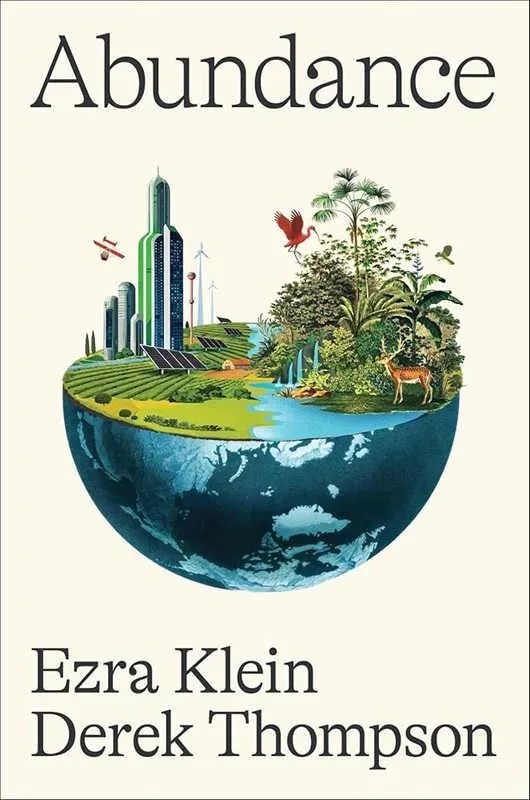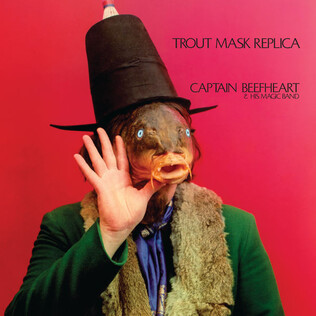
I went to see Minecraft and couldn’t help noticing a pattern in recent blockbusters—from Mario Bros. and Everything Everywhere to Spider-Man, Ghostbusters, and The Batman: every character is hustling, struggling, or just scraping by. It signals how economic precarity has been normalized in American storytelling—and not just in dramas or indie films, where you’d expect that tone. It’s everywhere now.
It’s as if the industry’s collective unconscious lags people’s reality but much is much faster than politics. Back in 2020 or 2021, when these scripts were finalized, screenwriters and execs had already recognized that “broke and overworked” wasn’t a quirky character trait anymore—it was the default condition of the American viewer.
The contradiction is sharper considering media kept insisting things were improving—or, in Fox’s case, that they weren’t because of “woke” or brown people. Meanwhile, Hollywood was already packaging narratives that admitted the opposite.
<>
At first glance, Minecraft—a game about infinite possibility, where players sculpt blocky worlds with godlike creativity—seems like an escapist fantasy. But dig beneath its colorful surface, and you’ll find a mirror reflecting the quiet desperation of modern life: the grind. Survival mode, the game’s most iconic format, isn’t about building castles in the clouds. It’s about punching trees for lumber before sunset, frantically cobbling together a shelter to fend off zombies, and mining deep into the earth for scarce resources, all while hunger gnaws at your pixelated stomach. This is precarity, gamified.
Minecraft’s core loop—grind, hoard, survive—resonates because it replicates the rhythms of late capitalism. Players aren’t just crafting tools; they’re performing the daily calculus of scarcity. Will this coal last the night? Can I afford to risk the caves for diamonds? Should I prioritize bread or armor? These aren’t just gameplay choices; they’re metaphors for a world where stability feels just out of reach, where every gain is shadowed by the threat of losing it all. Even Creative mode, with its cheat-code abundance, can’t escape the ethos of productivity: the pressure to build bigger, faster, better, as if self-worth is measured in virtual monuments.
The game’s brilliance lies in its unspoken critique. While politicians spin fictions about “resilient economies” and “opportunity for all,” Minecraft admits the truth: life is a series of precarious transactions. You labor to stack blocks, only to watch a creeper blow them apart. You plant crops, only to have them trampled. You build empires, but the grind never stops—there’s always another resource to extract, another threat to outrun. It’s no accident that “automated farms” became a hallmark of advanced play: even in a world of limitless dirt, players engineer systems to optimize their toil, mirroring our own obsession with gig apps and side hustles.
<>
Hollywood’s recent blockbusters—from Spider-Man’s rent woes to Everything Everywhere’s multiverse-adjacent IRS trauma—have begun to acknowledge this reality. But Minecraft short of did it first, and more honestly. It doesn’t package precarity as a plot twist or a character quirk; it’s the default condition of existence. The game’s unrelenting demand for labor, its indifference to your struggles, and its refusal to guarantee safety even after hours of work make it the purest cultural artifact of our age. In a world where politics peddles fantasy, sometimes the clearest truths come from a world made of blocks—where survival isn’t a hero’s journey, but a daily scramble to keep the lights on.
The pervasive theme of economic precarity in recent blockbusters—from Minecraft to Spider-Man and The Batman—does more than mirror America’s fraying economic reality; it underscores a profound political failure. While Hollywood’s storytellers have instinctively woven narratives of hustling, scraping-by protagonists into mainstream entertainment, the center-left and center-right political coalitions remain strikingly unable—or unwilling—to articulate a coherent response to the material conditions driving this cultural shift. This dissonance reveals a vacuum in political imagination, where pop culture has become a reluctant truth-teller while partisan elites cling to outdated frameworks.
When these films entered development in 2020-2021, creators implicitly acknowledged what policymakers still struggle to name: that stagnant wages, gig-economy exploitation, and the erosion of social safety nets had transformed “broke and overworked” from a temporary setback to a permanent state of being. Yet the political establishment’s response has been muted, even as Hollywood packaged precarity as escapism. The center-left, tethered to incrementalism and allergic to structural critique, offers Band-Aid solutions—student debt tweaks, means-tested tax credits—that fail to match the scale of collapse. The conservative right, meanwhile, defaults to nostalgia for a mythologized post-war prosperity, blaming cultural scapegoats (“wokeness,” immigrants) while accelerating the very policies—deregulation, union-busting, austerity—that gutted economic stability.
This paralysis is amplified by media narratives that oscillate between gaslighting and deflection. Corporate outlets tout declining inflation or “record job growth” as proof of recovery, ignoring how metrics like GDP obscure lived realities of working-class Americans juggling three apps to pay rent. Right-wing media, as noted, weaponizes precarity to fuel culture-war panic, framing inequality as a symptom of moral decay rather than policy choices. Both approaches alienate audiences who see their struggles reflected not in political rhetoric, but in Peter Parker’s eviction notices or the existential fatigue of Everything Everywhere’s laundromat-timeline-hopping heroine.
Hollywood’s embrace of precarity-as-backdrop exposes how thoroughly neoliberalism has eroded political language. The center-left, still courting donor classes invested in the status quo, avoids terms like “class struggle” or “redistribution,” recasting systemic failure as individual hardship to be mitigated, not overturned. The center-right, having abandoned even lip service to economic populism, peddles libertarian fairy tales (“just work harder!”) that resonate only with those insulated by wealth. Meanwhile, blockbuster screenwriters—unburdened by partisan constraints—depict a world where systemic collapse is the air everyone breathes: Batman’s Gotham isn’t saved by a bold policy agenda, but by a traumatized billionaire punching clowns.
The result is a cultural moment where fiction feels more honest than politics. Audiences flock to these films not just for escapism, but for the relief of seeing their struggles acknowledged in an era when political leaders refuse to do so. Until the center-left and center-right confront the roots of precarity—corporate power, financialized capitalism, the dismantling of worker solidarity—their platforms will remain as disconnected from reality as a Mario Bros. warp pipe. And Hollywood, however unwittingly, will keep drafting the obituary for an American Dream that politics no longer dares to name.
The irony is almost too rich: Hollywood, an industry built on selling fiction, now peddles narratives closer to material reality than the Democratic Party does. For all its corporate cynicism, Hollywood at least acknowledges the dystopia it monetizes. Its superheroes juggle rent and existential dread; its multiverse-hopping heroes are crushed by IRS audits and immigrant parent guilt. These stories, however garish, are rooted in the lived texture of precarity—the three jobs, the debt, the sense of systems spiraling beyond control. Democrats, by contrast, have crafted a political brand so untethered from material conditions that it verges on magical realism.
Consider the plot holes in the Democratic script: They tout “Bidenomics” while presiding over a housing market where the median home price now requires a $115,000 salary—a sum 75% of Americans don’t earn. They celebrate “record low unemployment” as if gig work and AI-driven layoffs haven’t turned full-time employment into a luxury good. They nod at climate disaster while approving more oil drilling than Trump, as if we’re all living in a Pixar film where the laws of physics pause for moderate bipartisanship. Hollywood’s heroes might battle cartoonish villains, but the Democrats’ villains—corporate greed, oligarchic power—are treated as unmentionable ghosts, haunting a set everyone pretends isn’t on fire.
Hollywood’s “unrealism” is at least honest about its artifice. When The Hunger Games franchises rake in billions by dramatizing wealth inequality and elite sadism, they’re channeling a collective recognition that capitalism has become a death game. Yet Democrats still frame poverty as a personal failure to be solved with tax credits and bootstraps, a narrative so detached from the algorithmic wage suppression and monopoly pricing crushing households that it makes Avengers time travel look plausible. Even Marvel’s Thanos had a clearer policy platform (“snap away half of life”) than the party’s milquetoast stance on corporate monopolies.
The true fiction isn’t Batman’s rogues’ gallery—it’s the Democratic Party’s insistence that incremental tweaks to a broken system will reverse decades of collapse. Hollywood’s writers, for all their clichés, understand that audiences crave catharsis: a villain to punch, a system to smash, a blueprint for revolt. Democrats offer none of these. Instead, they gaslight voters with spreadsheet macros about “cost-saving efficiencies” and “public-private partnerships,” as if the working class hasn’t already seen this movie—and hated the ending.
In this era of compounding crises, Hollywood’s lies are at least useful lies. They admit, however crassly, that life under late capitalism feels apocalyptic. Democrats, meanwhile, are stuck in a Frank Capra fanfic, insisting America is one bipartisan infrastructure bill away from a rainbow-farting utopia. The party’s refusal to name power—to confront banks, monopolists, or the billionaire donor class—renders its rhetoric more delusional than anything in Barbie’s plastic feminist dreamhouse.
So yes: Hollywood is a profit-hoarding, union-busting machine. But in a perverse twist, its greed forces it to listen. To stay relevant, it must metabolize the anxieties of its audience, even if only to repackage them as entertainment. The Democratic Party, by contrast, answers to a donor aristocracy that profits directly from the status quo—and thus has no incentive to see, hear, or speak the truth. The result? An industry that sells $20 popcorn to audiences watching films about late-stage collapse is still more reality-based than a political party asking those same audiences to vote for “4 more years of normalcy.”
The final act twist? Hollywood’s fictions are a cry for help. The Democratic Party’s fictions are a demand for complacency. One admits the house is burning. The other hawks commemorative “This Is Fine” mugs.

